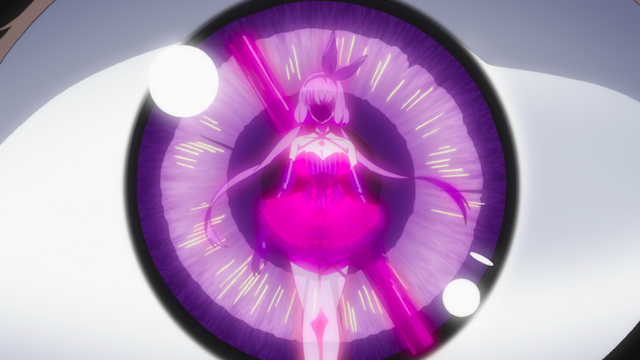
As a kid, I was both enamored with and totally terrified of supernatural monsters. That sentiment primarily came from my religious upgringing, but anime was also a factor, which I'll blame on early exposure to the 80s Vampire Hunter D OVA. Live-action movies played a role, as well. I cowered at the TV any time I stumbled across trailers for Francis Ford Coppolla's Dracula (thanks for the nightmares, Gary Oldman). There was something far more disturbing to me about a vaguely 'realistic' depiction of the supernatural, performed by actual people, more so than any hand-drawn renditions of ghoulish beasts. It amplified my fear that those scary beings might be more real than I wanted to believe, and I was terrified of encountering something demonic.
Unlike my terror-fueled childhood visions on this topic, In/Spectre shows humanity to be far less impotent in this regard. Humans in this series can regulate, create, and destroy the supernatural, and are even capable of becoming (at least partially) mystical creatures themselves. However, In/Spectre is nuanced enough to avoid making this a one-sided narrative gimmick: paranormal beings are not completely helpless or disempowered by humans. Rather, the show depicts an intriguing interplay between humans and the supernatural; a fluid dynamic with checks and balances on both sides. In/Spectre offers a unique depiction of supernatural creatures, which makes for a refreshing and gratifying viewing experience.
Did I mention the show also uses the aforementioned themes to touch upon some important real-life topics too? Wanna know more? Then keep on reading, and be aware there will be spoilers after the first section!
The Basic Premise of Kotoko's Character
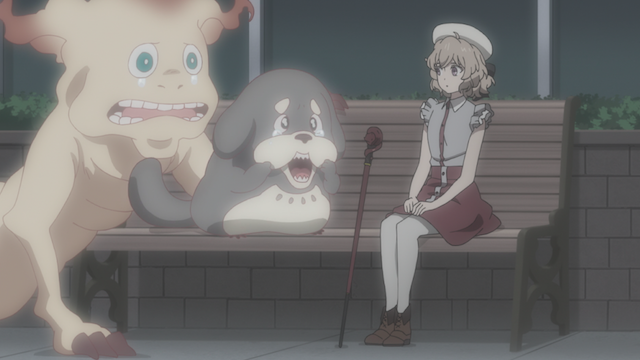
The very premise of In/Spectre's protagonist Kotoko offers a unique portrayal of supernatural monsters, and how they connect with humans. Episode one reveals to us that 15-year-old Kotoko lost her right eye and left leg in order to become the Goddess of Wisdom, an intermediary who helps investigate and solve pressing issues faced by spirit beings. Essentially, Kotoko helps regulate the spirit world using her own human intellect. You'd think the realm of the dead would find and choose a ghostly, non-mortal detective to deal with their own problems, right? Nope. In/Spectre provides aficionados of all-things-paranormal a unique, satisfying genre-twist by making spirits seek guidance from a human protagonist, upending the usual narrative trope where humans are the ones looking for preternatural counsel.
As with all things in matters of art, though, it's probably debatable whether or not Kotoko is truly 100% human considering she was granted such a lofty status by the spirit realm. But if she does possess superhuman abilities of some sort, she has yet to display them. One of Kotoko's charms is that she uses her natural brain power to find her way out of dicey situations, even when she's talking to a giant river snake or up against something as fierce as Steel Lady Nanase. And this lack of preternatural powers is what makes Kotoko physically vulnerable to the spiritual creatures she deals with. That's where her more questionably-human 'boyfriend' Kuro comes in as a balancing co–protagonist.
Kuro: To Be (Human), or Not to Be
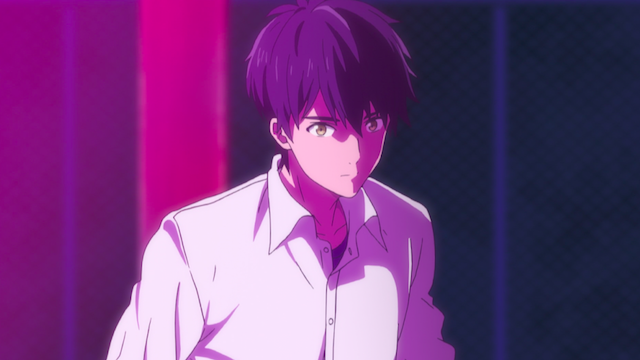
After being forced by his family to eat both mermaid flesh and a Kudan (a yokai that dies after predicting the future), Kuro Sakuragawa transformed into a hybridized being: at once a person yet also non-human, capable of resurrecting himself after being killed, poisoning yokai with his own body, and seeing and choosing future events. As someone more on the supernatural side of things compared to Kotoko, Kuro makes for a great character contrast to Kotoko's decidedly human intellectual strengths. The multi-episode battle with Steel Lady Nanase serves as as a prime example: Kuro brutally goes toe to toe with the beam-wielding monster, while Kotoko goes online and uses her mental prowess to try to eliminate their ghoulish enemy. In/Spectre certainly knows how to use its two protagonists in complementary and compelling ways.
Another point of interest is how Kuro's family acts intentionally diabolical, in a way that makes them crueler and more fiendish than any monster in the series. The Sakuragawa family's willingness to brutally deceive their closest kin by feeding them yokai flesh stands as a sharp contrast to other recent fantasy-based anime, such as Demon Slayer: Kimetsu no Yaiba, where demons prey on human flesh for sustenance and power. In/Spectre alters that: humans consume demons in the quest for wealth, fame, power, and the ability to predict the future. This thematic alteration also takes shape in how spirits view Kuro. Most of them find Kuro absolutely terrifying for a variety of reasons, a likely one being his ability to poison yokai who eat his flesh. Compare this plot element to most supernatural media, where the humans are usually the ones deathly afraid of demonic spirits/ghosts/fill-in-the-blank.
Kuro and his family add another layer of depth to In/Spectre's narrative repertoire, by making humans a frightful and comparatively crueler presence in contrast to the monsters in the series. In terms of a real life takeaway, the actions of the Sakuragawas offer a stark message: the exploitative pursuit of personal power can transform us into creatures who are far more malevolent, and more demonic, than any supernatural beast or spirit.
And now for my final example...
You Can Blame Everything on the Internet
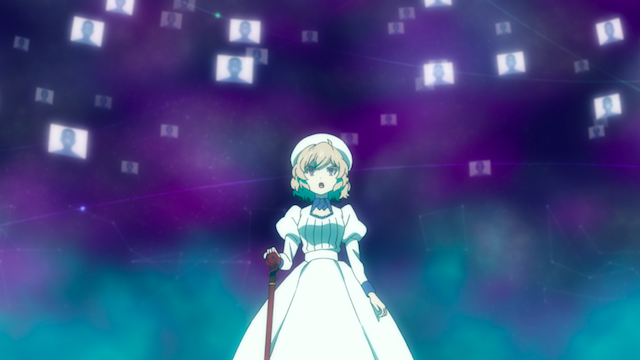
The Steel Lady Nanase arc is In/Spectre's meatiest story thus far. Beginning at episode three, it traces the mysterious alleged death of a controversial popstar named Nanase Karin, who died after a steel beam fell on her one rainy night. A faceless, ghostly version of Nanase Karin appears, and uses a metal beam—similar to the one responsible for her death—as her murder weapon. The internet deems her 'Steel Lady Nanase.'
The truly fascinating part about this arc is the explanation behind Steel Lady Nanase's existence. Kotoko reveals that the ghastly creature is a 'monster of the imagination,' created and manifested physically by the collective imagination and will of millions of people (a collective will manipulated all along the way by Rikka, who alters future events just like her cousin Kuro does). More than anywhere else in the show, this is the best example of human reality dictating the supernatural. Spirits seem to exist on their own elsewhere in the series (such as a spirit from a person who died), but Steel Lady Nanase comes into existence primarily through the internet's collective belief in what turns out to be a lie. Plenty of supernatural fiction features beasts who exist and act completely external to—or separate from—human behavior, words, etc. In/Spectre forges its own distinct take on the aforementioned trope by featuring a supernatural monster who is permeable to—and in fact created by—human imagination.
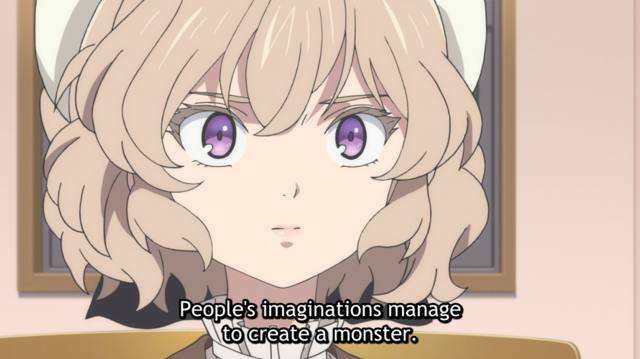
Unfortunately, it turns out that conjuring a murderous monster into existence comes with some problems. The fictive Steel Lady Nanase goes on a rampage and starts killing actual humans, and even though people are fearful of her, the only way to destroy her is by undoing collective belief. It takes Kotoko's sly wit and penchant for fiction to unravel the Internet's certainty of the ghoul's existence. This plot point displays an unfortunate truth pertinent for our current digital age: any Internet lie told convincingly enough and believed by enough people can evolve into 'monsters' that affect the 'real' world (Internet leaks and rumors in all their forms are no trivial matter). It makes the truth about anything difficult and nigh-impossible to uncover when millions of people have access to, and share, countless discussion posts, news articles, memes, and alleged 'facts' without vetting the information first.
From the central plot, to the characters, to the way it addresses the Internet itself, In/Spectre tackles the connection between humans and the supernatural with sparkling finesse and originality. Instead of settling into well-worn tropes of how humans and spiritual beings relate, In/Spectre carves its own path and narrative trail to great success.
What else about In/Spectre intrigues you when it comes to humans and the supernatural? Let me know in the comments below!
![]()
Source: Latest in Anime News by Crunchyroll!
Comments
Post a Comment